Madeleine Recipe Mary Berry: A Perfect Treat for Any Occasion
Madeleines are a timeless French pastry that’s both elegant and delicious. They are small, shell-shaped sponge cakes with a rich, buttery flavor and a light, airy texture. Madeleine Recipe Mary Berry has become one of the most beloved ways to create these delightful cakes, with her tried-and-tested method producing consistently delicious results.
Whether you’re a seasoned baker or a beginner, Mary Berry’s Madeleine Recipe Mary Berry offers a foolproof guide to crafting this classic treat. Madeleines are perfect for tea parties, gatherings, or as a sweet snack, and Mary Berry’s recipe ensures they come out light, fluffy, and flavorful every time.
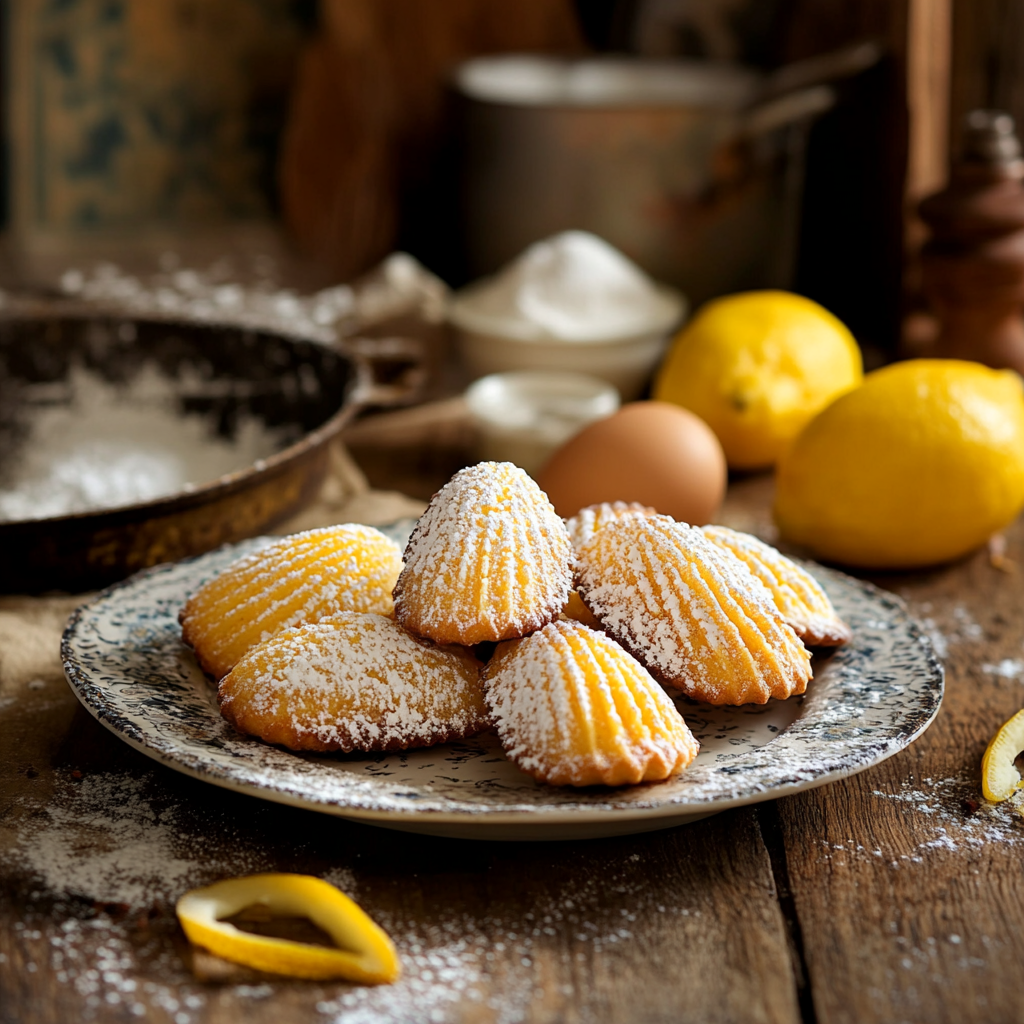
In this expanded guide, we will explore Madeleine Recipe Mary Berry in great detail, offering step-by-step instructions, variations on the recipe, helpful tips, and even some fun facts. We’ll also dive into the history and origins of the madeleine, giving you all the knowledge you need to bake like a pro.
Table of Contents
1. Introduction: Why Madeleine Recipe Mary Berry is a Favorite
There’s something undeniably special about madeleines. These delicate, shell-shaped cakes are the epitome of French patisserie, with their rich flavor and feather-light texture. Yet, despite their elegance, they’re relatively simple to make. This balance of simplicity and sophistication is why Madeleine Recipe Mary Berry is so adored by bakers all over the world.
As one of the UK’s most beloved television personalities and bakers, Mary Berry has made a name for herself with her approachable and user-friendly recipes. Her Madeleine Recipe Mary Berry is no exception, offering an easy-to-follow method that yields perfect madeleines every time. Whether you’re new to baking or an experienced home chef, her recipe ensures success in the kitchen.
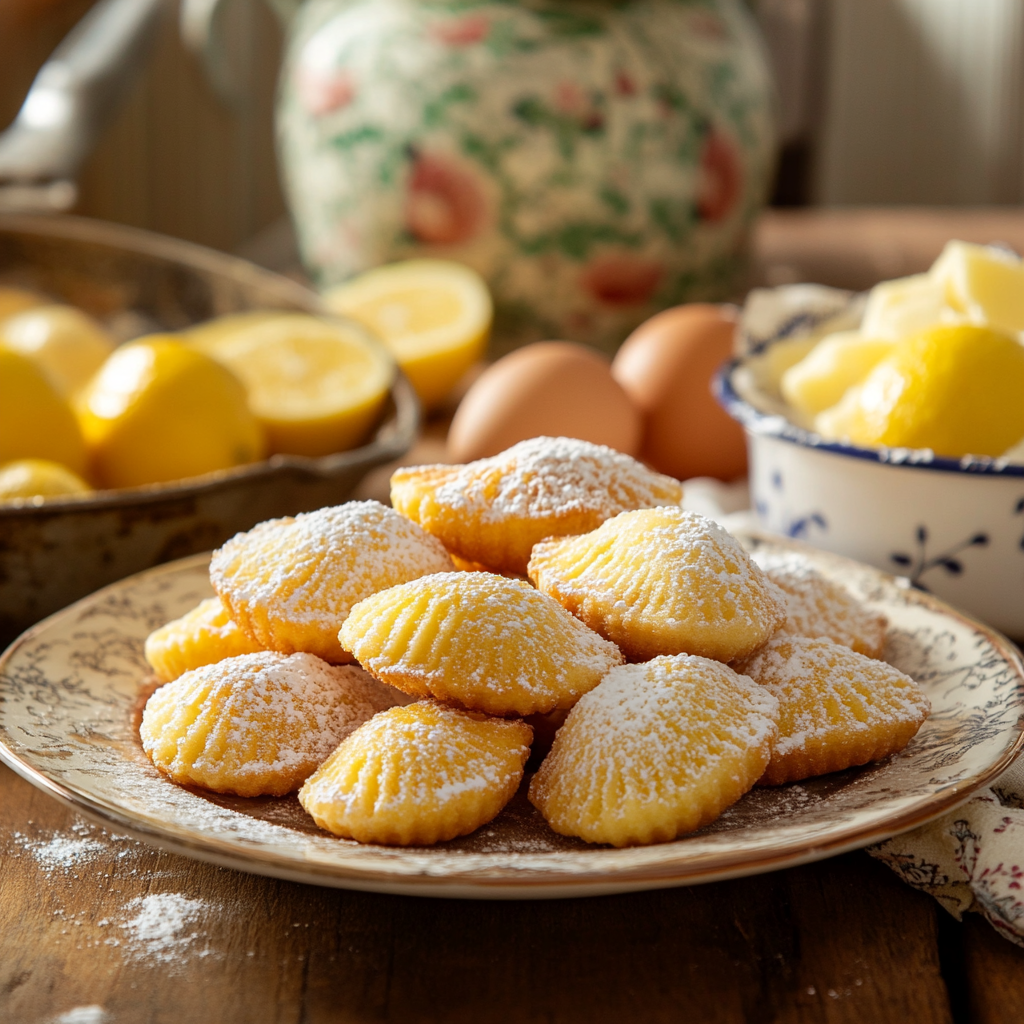
Mary Berry’s approach emphasizes using basic ingredients—many of which you likely already have in your pantry—combined with helpful tips and tricks to ensure your madeleines are light, fluffy, and perfectly golden-brown. In this guide, we’ll break down her Madeleine Recipe Mary Berry in detail and give you the confidence to bake these gorgeous treats in your own kitchen.
2. What are Madeleines?
Madeleines are small, shell-shaped sponge cakes that originated in the Lorraine region of northeastern France. These cakes have a unique texture that is somewhere between a biscuit and a light sponge cake, making them a perfect treat to pair with tea or coffee.
Characteristics of Madeleines:
- Shell-Shaped: The defining characteristic of a madeleine is its distinct shell shape. This shape is achieved by baking the batter in a special madeleine pan, which features shell-shaped indentations.
- Light and Fluffy: The texture is delicate and airy, with a slight crispiness on the edges and a soft, tender interior.
- Citrusy and Buttery: Madeleines are traditionally flavored with lemon zest or orange zest, giving them a refreshing citrusy kick. The rich butter flavor is also a key component of the recipe.
Madeleines are often associated with elegance and are a favorite for tea time, celebrations, or as a sweet gift for friends and family. When baked well, they melt in your mouth, leaving behind a subtle but satisfying sweetness.
3. A Brief History of Madeleines
The origins of the madeleine are somewhat debated, but the most popular story traces them back to the 18th century in the Lorraine region of France. According to one legend, a young woman named Madeleine Paulmier was tasked with baking cakes for the Duke of Lorraine. She created these shell-shaped cakes, which became a sensation, and the dessert was named after her.
However, another story suggests that madeleines have much older roots, with some claiming they originated in the court of Louis XV. Regardless of their exact origins, madeleines became widely popular in France and beyond, especially after being famously mentioned in the work of French writer Marcel Proust in his novel In Search of Lost Time.
Since then, madeleines have become a staple of French baking and have made their way into kitchens around the world. Today, they’re often enjoyed as a simple treat with tea or coffee, and their popularity continues to grow.
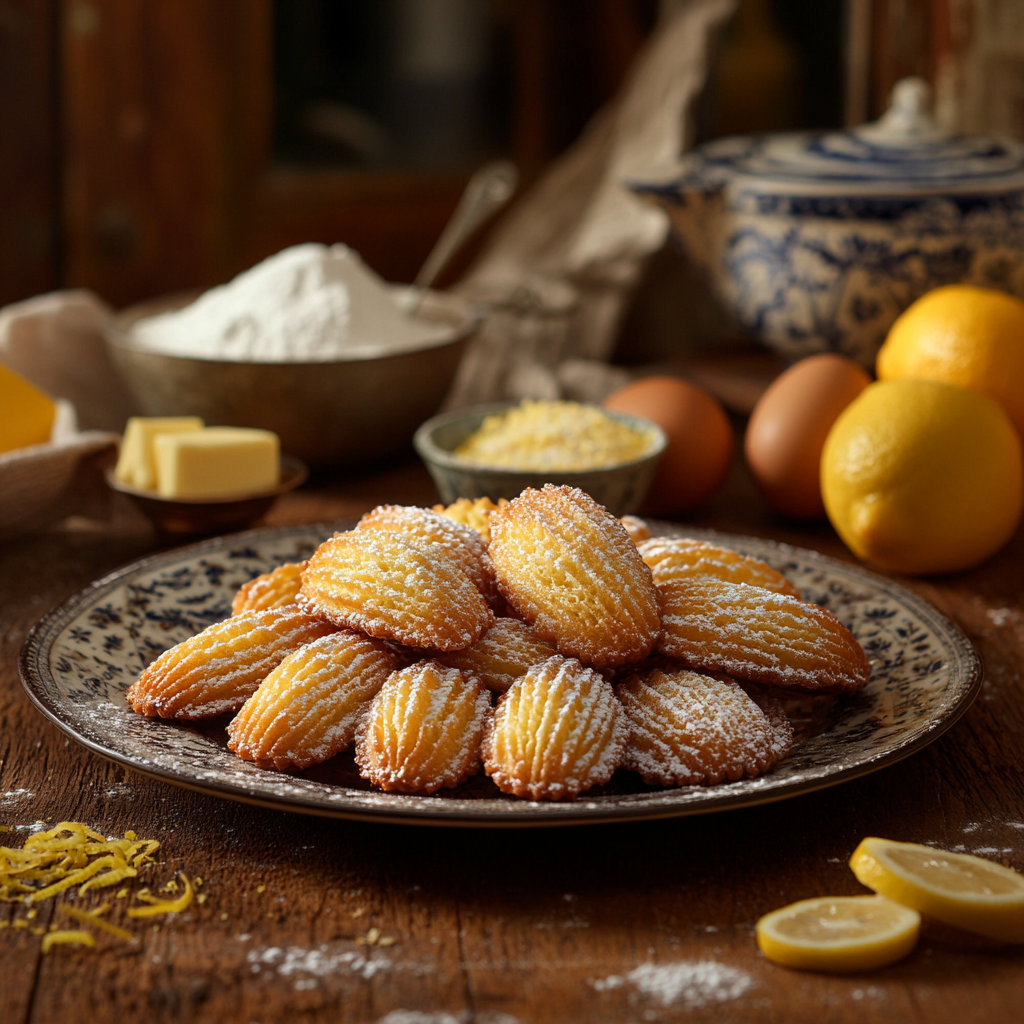
4. Key Ingredients for the Perfect Madeleine
Mary Berry’s Madeleine Recipe Mary Berry uses just a few simple ingredients, but each one plays an essential role in achieving the perfect result. Let’s take a closer look at the key ingredients and why they are important.
The Role of Butter
Butter is a crucial ingredient in madeleines, contributing both to the flavor and texture. Unsalted butter is preferred to give you full control over the seasoning. The butter adds richness to the batter and helps to create a soft, moist crumb.
In Mary Berry’s Madeleine Recipe Mary Berry, the butter is melted and then incorporated into the batter. This creates a smooth, consistent texture that’s key to achieving the lightness of the madeleine.
The Importance of Eggs
Eggs are essential to giving madeleines their light and airy structure. The eggs help the batter to rise and set as the madeleines bake. Mary Berry’s recipe uses whole eggs, which are beaten with sugar until light and fluffy. This creates a base that allows air to incorporate, resulting in a soft, sponge-like texture.
Why Use Fresh Lemon Zest?
Lemon zest is one of the signature ingredients in many madeleine cake recipes Mary Berry. The zest adds a refreshing citrus flavor that brightens the richness of the butter. The zest is finely grated from a fresh lemon, ensuring a fragrant, zingy flavor that makes the madeleines stand out.
5. Step-by-Step Guide: How to Make Madeleine Recipe Mary Berry
Now, let’s dive into the detailed steps for making Mary Berry’s Madeleine Recipe. Follow these instructions carefully, and you’ll soon have a batch of perfectly baked madeleines.
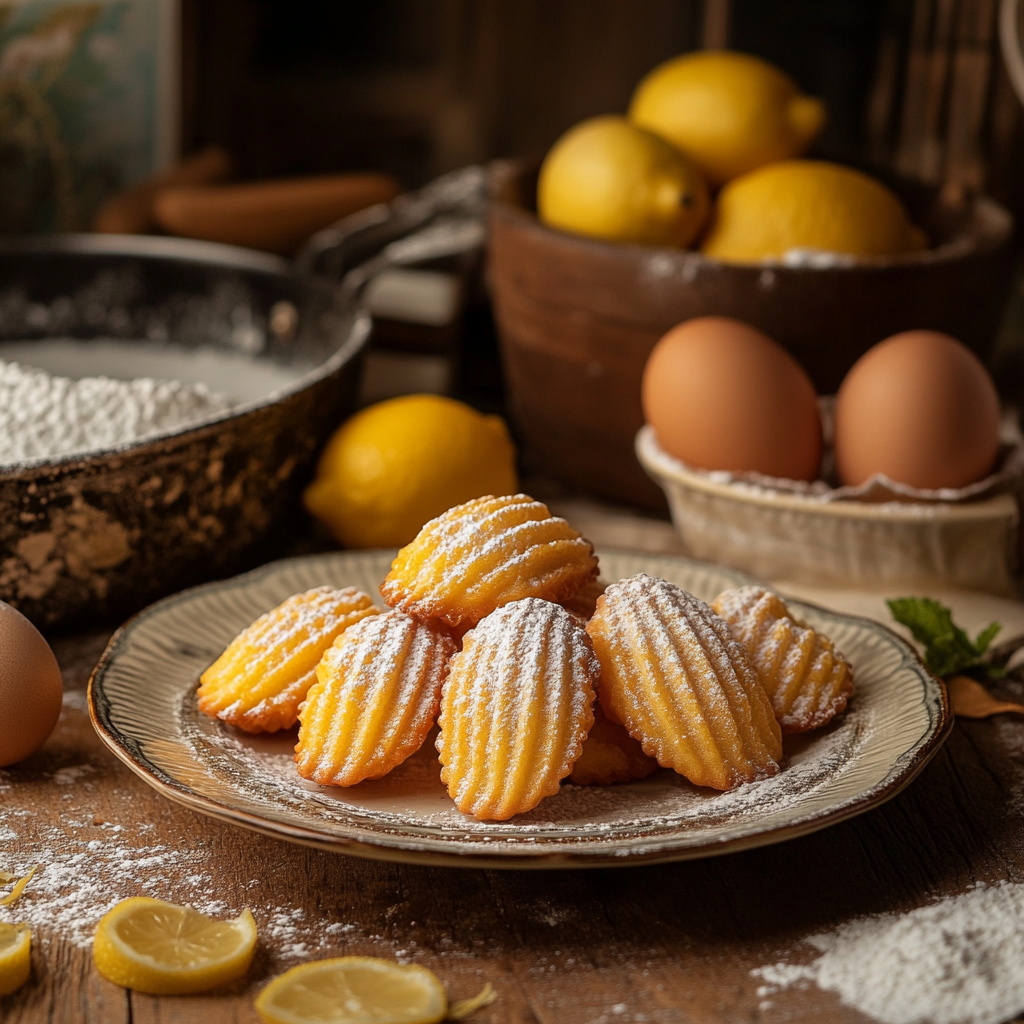
Preparing the Batter
- Preheat the Oven: Begin by preheating your oven to 190°C (170°C for fan-assisted) or 375°F. Grease and flour your madeleine pan, making sure the grooves are well-coated so the cakes will release easily after baking.
- Melt the Butter: In a small saucepan, gently melt the butter over low heat. Allow it to cool slightly before adding it to the batter, as this prevents it from cooking the eggs in the mixture.
- Whisk the Eggs and Sugar: In a large mixing bowl, whisk the eggs and sugar together until the mixture becomes thick, pale, and fluffy. You can use an electric mixer for this step to save time. This is a crucial stage, as it adds air into the mixture and helps create the light texture of the madeleines.
- Sift the Dry Ingredients: Sift the flour and baking powder into a separate bowl to ensure there are no lumps. Gradually fold the sifted dry ingredients into the egg mixture using a spatula. Be gentle—avoid over-mixing.
- Add Lemon Zest and Butter: Once the dry ingredients are incorporated, gently fold in the lemon zest for a burst of freshness. Then, pour in the melted butter and mix until smooth.
- Chill the Batter: Cover the bowl with plastic wrap and place it in the refrigerator to chill for at least 30 minutes. Chilling the batter helps the madeleines keep their shape and texture while baking.

Baking Tips
- Fill the Madeleine Molds: Using a spoon or piping bag, fill each mold of the madeleine pan about two-thirds full. Avoid overfilling the molds, as the batter will rise and spread during baking.
- Bake the Madeleines: Place the pan in the preheated oven and bake for 10-12 minutes, or until the madeleines are golden brown around the edges and slightly firm to the touch. They should have a gentle dome shape.
- Cool the Madeleines: Let the madeleines cool for 5 minutes in the pan before transferring them to a wire rack to cool completely. If desired, dust them with powdered sugar for a light, sweet finish.
6. Common Mistakes to Avoid When Baking Madeleines
Making madeleines is relatively simple, but there are a few common mistakes that can affect your results. Let’s take a look at some of these pitfalls and how to avoid them:
- Not Chilling the Batter: Chilling the batter is essential to ensuring the madeleines hold their shape while baking. If you skip this step, you may end up with flat, misshapen madeleines.
- Overmixing the Batter: Be gentle when mixing the batter. Overmixing can lead to dense, heavy madeleines. Use a folding motion to incorporate the ingredients, and stop as soon as everything is combined.
- Underbaking or Overbaking: Keep an eye on the madeleines while they bake. Underbaking will leave them raw in the center, while overbaking will dry them out. The key is to bake them just long enough for a golden-brown crust while keeping the interior soft.
7. Variations on Madeleine Recipe Mary Berry
Mary Berry’s Madeleine Recipe Mary Berry is simple and versatile, offering plenty of room for customization. Here are a few fun variations you can try to add your own spin to these classic French treats:
Chocolate Madeleines
Add a rich twist by incorporating cocoa powder or melted chocolate into the batter. For an extra decadent touch, dip the cooled madeleines into chocolate ganache.
Almond Madeleines
Swap the vanilla extract for almond extract and fold in some ground almonds for a nutty flavor. Almonds add a pleasant richness and texture to the madeleine batter.
Fruit-Infused Madeleines
Incorporate finely chopped dried fruit, such as cranberries or apricots, into the batter. For a fresh fruit twist, fold in some finely grated orange or lime zest for a citrusy kick.
8. How to Serve and Store Madeleines
Madeleines are best served fresh out of the oven, but they can also be enjoyed the next day if stored properly.
Serving Suggestions
Madeleines are perfect on their own with a cup of tea or coffee, but they can also be served alongside whipped cream, fresh fruit, or a drizzle of melted chocolate. For a more indulgent dessert, serve them with a scoop of vanilla ice cream.
Storing Madeleines
Store cooled madeleines in an airtight container at room temperature for up to 3 days. If you want to freeze them, place them in a freezer-safe container and store for up to 3 months. Reheat in the oven to restore their fresh texture.
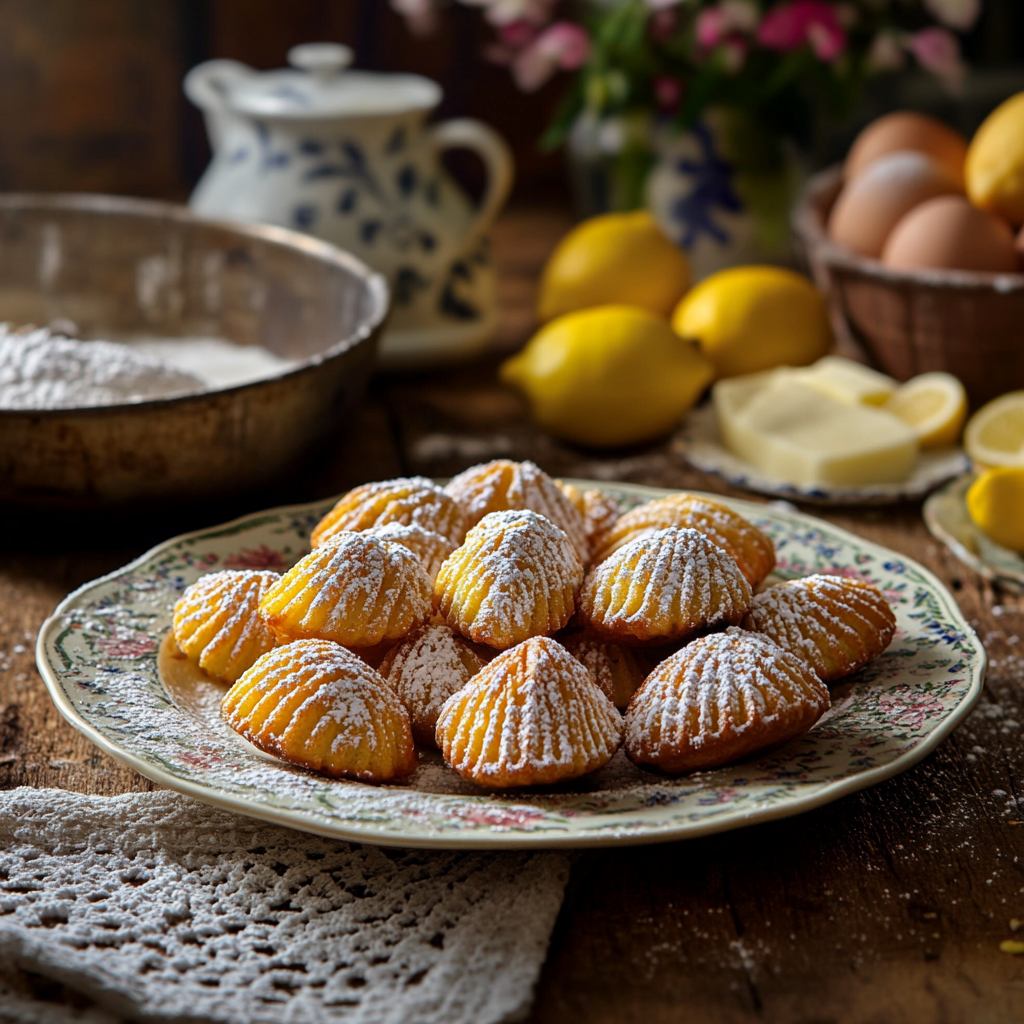
9. Madeleines for Special Occasions
Madeleines are the perfect treat for a variety of special occasions. Their elegant shape and delicate flavor make them a standout at tea parties, birthdays, and other celebrations. You can even wrap them in cellophane and tie with a ribbon for a thoughtful homemade gift.
10. Why Madeleine Recipe Mary Berry is a Must-Try
Mary Berry’s Madeleine Recipe Mary Berry has become a staple in kitchens worldwide because it consistently delivers delicious results with minimal effort. By following her simple yet effective instructions, you can create a batch of madeleines that are perfectly tender, subtly sweet, and full of flavor.
11. Conclusion: The Joy of Madeleine Recipe Mary Berry at Home
Baking Madeleine Recipe Mary Berry is a rewarding and enjoyable experience. With just a few basic ingredients, you can create these classic French treats that are sure to impress anyone who tries them. So why not try baking them today? Whether you’re new to baking or an experienced chef, this recipe will help you achieve perfect madeleines every time.
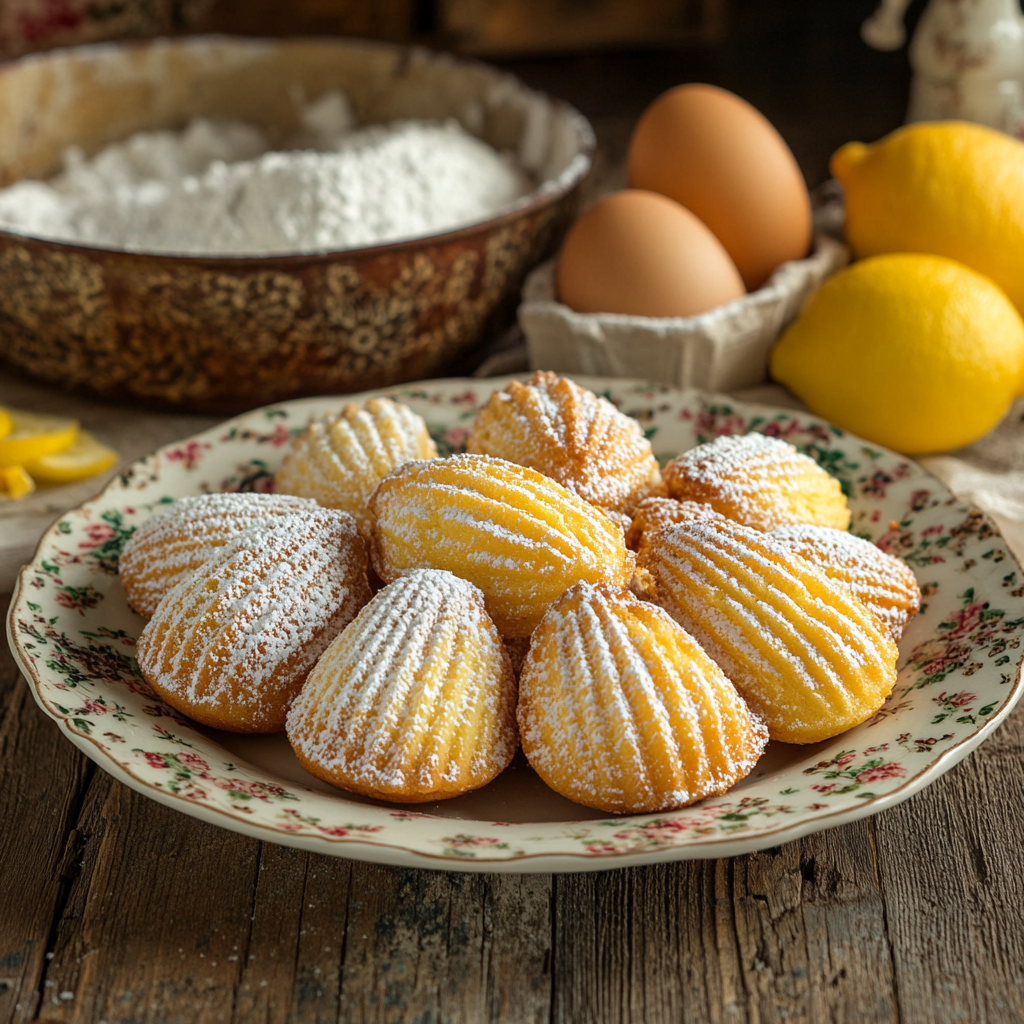
12. FAQ
1. Can I make Madeleine Recipe Mary Berry in advance?
Yes, you can absolutely make Madeleine Recipe Mary Berry in advance. The batter can be prepared ahead of time and stored in the refrigerator for up to 24 hours. This actually allows the flavors to meld together even more. When you’re ready to bake, simply spoon the chilled batter into the madeleine pan and bake as usual.
You can also bake the madeleines in advance and store them. Once baked and cooled, place them in an airtight container, and they’ll stay fresh for up to 3 days at room temperature. If you’d like to keep them for longer, you can freeze them. Simply place the cooled madeleines in a freezer-safe bag or container, and they will last for up to 3 months. To reheat, bake them in a preheated oven at 160°C (320°F) for around 5-10 minutes to restore their fresh texture.
2. What’s the best way to get the shell shape on my madeleines?
The iconic shell shape of a madeleine comes from using the proper madeleine pan, which has shell-shaped indentations. For the best results, it’s important to grease and flour the pan thoroughly, especially the grooves. Some bakers even recommend chilling the pan in the fridge for a few minutes before filling it with batter. This will help the madeleines retain their shape as they bake.
Alternatively, you could use a non-stick baking spray that contains both oil and flour, which helps the batter release easily and ensures that your madeleines maintain that classic shell shape.
Another trick is to only fill each mold about two-thirds full with batter, as the madeleines will rise slightly during baking. This prevents the batter from overflowing and distorting the shape.
3. Can I use margarine instead of butter in Madeleine Recipe Mary Berry?
While butter is the key ingredient for the rich, buttery flavor of madeleines, you can substitute margarine if needed. However, keep in mind that margarine won’t give the madeleines the same depth of flavor as butter. The texture might also be a bit different—madeleines made with margarine tend to be a little less rich and soft compared to those made with butter.
If you opt for margarine, make sure to use a high-quality, unsalted one to maintain control over the seasoning of your madeleines. If you’re looking for a more dairy-free or vegan option, there are plant-based butters that can be used as well, though the flavor and texture might vary slightly.
4. How can I prevent my madeleines from sticking to the pan?
Preventing madeleines from sticking to the pan is crucial to ensure they come out perfectly. Here are some helpful tips:
- Grease the Pan Well: Use unsalted butter or a non-stick cooking spray to grease the madeleine pan. Be sure to coat all the grooves generously.
- Flour the Pan: After greasing, dust the pan lightly with flour, tapping out the excess. This will create a barrier between the batter and the pan, making it easier to remove the madeleines.
- Chill the Pan: Before filling the molds with batter, chill the greased and floured pan in the refrigerator for about 10 minutes. This extra step helps to prevent the batter from sticking as it bakes.
- Use a Non-Stick Madeleine Pan: If you bake madeleines regularly, investing in a good-quality non-stick madeleine pan can make a big difference in how easily the cakes come out.
By following these tips, you’ll ensure that your madeleines retain their beautiful shell shape and come out of the pan easily.
5. Can I add other flavors to Madeleine Recipe Mary Berry?
Absolutely! One of the best things about Madeleine Recipe Mary Berry is its versatility. While the recipe traditionally uses lemon zest for a fresh, citrusy flavor, you can easily experiment with other flavors to suit your taste preferences. Here are a few variations to try:
- Chocolate Madeleines: Add cocoa powder to the batter for a chocolatey twist, or melt some dark or milk chocolate and fold it into the mixture. You could also dip the cooled madeleines in melted chocolate for an extra indulgence.
- Almond Madeleines: Swap out the lemon zest for almond extract and fold in some ground almonds for a nutty flavor. This variation adds a lovely richness to the madeleines.
- Orange or Lime Zest: If you love citrus, try swapping the lemon zest for orange or lime zest for a tangy twist. These variations will still give you that fresh, light flavor with a new depth.
- Fruit-Infused Madeleines: Add finely chopped dried fruits like cranberries, raisins, or apricots. You could also add a spoonful of fruit preserves to the batter for a burst of flavor in each bite.
These flavor variations allow you to customize Mary Berry’s madeleine recipe and create your own signature treat.
6. Why did my madeleines not rise properly?
If your madeleines didn’t rise properly, there are a few potential causes:
- Underbeating the Eggs and Sugar: One of the key steps to achieving light, fluffy madeleines is to beat the eggs and sugar until they are thick, pale, and tripled in volume. This step incorporates air into the mixture, which helps the madeleines rise. If you don’t beat them enough, the batter will lack the necessary volume and air bubbles, causing them to be flat.
- Overmixing the Batter: Overmixing the batter after adding the dry ingredients can deflate the air bubbles, resulting in dense madeleines. Be gentle when folding in the flour and butter, and stop mixing as soon as everything is incorporated.
- Batter Not Chilled Long Enough: Chilling the batter before baking helps the madeleines keep their shape and rise evenly. If you skipped this step or didn’t chill the batter long enough, the madeleines may not have had enough time to set and rise properly during baking.
- Incorrect Oven Temperature: Make sure your oven is preheated to the correct temperature (190°C or 375°F). Baking at too low of a temperature can cause the madeleines to spread too much and not rise properly. If the temperature is too high, they might bake too quickly on the outside, leaving the inside raw.
By paying attention to these details, you can ensure that your madeleines rise beautifully and have that signature domed shape.
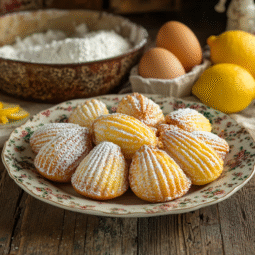
Madeleine Recipe Mary Berry
Equipment
- Madeleine pan (for the traditional shell shape)
- Electric mixer or hand whisk
- Mixing bowls
- Spatula
- Measuring spoons and cups
- Grater (for zesting lemon, optional)
- Cooling rack
Ingredients
- 115 g 1/2 cup unsalted butter, melted
- 125 g 1/2 cup caster sugar
- 2 large eggs
- 1 teaspoon vanilla extract
- Zest of 1 lemon or orange, if preferred
- 125 g 1 cup plain flour
- 1 teaspoon baking powder
- A pinch of salt
- Powdered sugar for dusting optional
Instructions
- spray and lightly dust it with flour.
- Mix the Wet Ingredients: In a large mixing bowl, whisk together the eggs and sugar until the mixture is pale and fluffy. This can take about 5 minutes with an electric mixer.
- Add Flavor: Stir in the vanilla extract and lemon zest (or orange zest if you prefer).
- Combine Dry Ingredients: In another bowl, sift the flour, baking powder, and salt together. Gently fold the dry ingredients into the wet mixture using a spatula or a metal spoon.
- Incorporate Butter: Slowly pour in the melted butter, folding it carefully into the batter until it’s smooth. Make sure you don’t overwork the batter to maintain the airy texture.
- Chill the Batter: Cover the bowl with plastic wrap and refrigerate the batter for about 30 minutes. Chilling the batter helps the madeleines rise properly and retain their shape.
- Fill the Pan: Spoon the batter into the madeleine pan, filling each mold about two-thirds full.
- Bake the Madeleines: Place the pan in the preheated oven and bake for 10-12 minutes, or until the madeleines are golden brown around the edges and have a domed shape.
- Cool: Remove the madeleines from the oven and let them cool in the pan for a couple of minutes. Then, transfer them to a wire rack to cool completely.
- Serve: Once cooled, dust the madeleines with powdered sugar if desired, and serve with tea or as a delicious snack.
